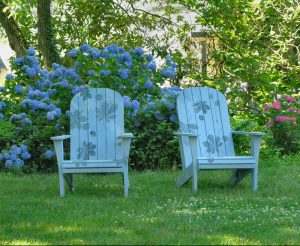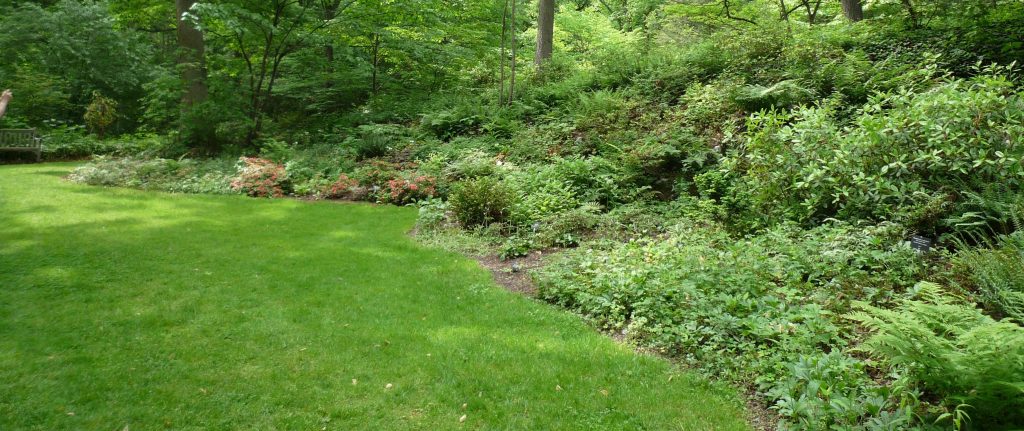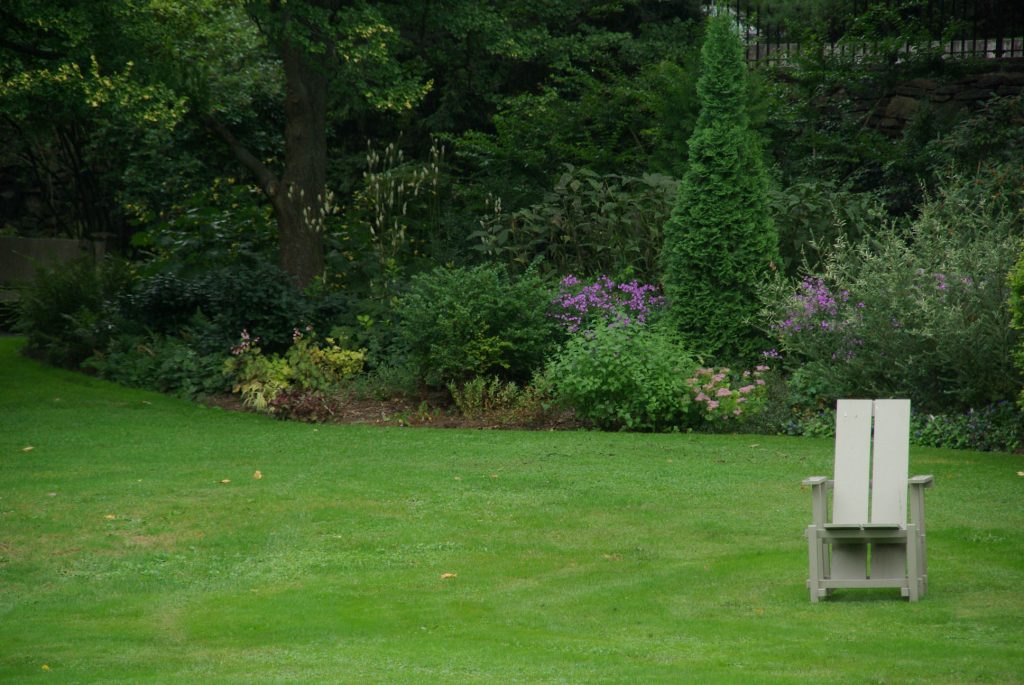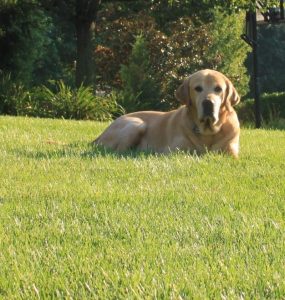Some grass greening guidance to toughen your turf for the long haul…
As summer blazes toward its scorching conclusion, lawns tend to suffer under the twin stressors of high temperatures and either too much or too little rain. Common signs of heat and water stress are: brown patches, weeds, and an over-all brown and brittle appearance.
Wake me up when it’s over
Once temperatures get into the 80s and stay there, lawns can begin to struggle, and may even go dormant if they don’t get enough water. Luckily, lawns usually wake up again once watering or rainfall resumes—unless there’s been a period of prolonged drought. Under those circumstances, it can take more than a single rainfall or a few passes with the sprinkler to bring grass out of dormancy and back to green.
Wise watering
Most lawns need about an inch of water per week to actively grow. This is true for most soil types —even clay. Sandy soils are the exception and need a bit more water–more like 1½ inches per week. When deciding whether or not to water, be sure to take into account both rainfall and irrigation amounts.

If you’re noticing weeds underfoot –or brown patches or wilt–your lawn may be showing signs of stress. (Photo by Joe Scarlata)
Don’t set it and forget it
Automatic sprinklers can be a real time saver, but be sure to check their settings. Many sprinkler systems are set up to go on automatically every other day for 20 minutes per zone. This procedure will not stimulate deep root systems (particularly on heavy soils). Most lawns are better off if they’re watered deeply just once every 5 to 7 days .
Too much of a good thing
Overwatering can actually cause more problems than under watering. Too much water can lead to “waterlogging,” which results in a poorly developed root system and greater probability of diseases like necrotic ring spot, anthracnose, and summer patch. Keep an eye on the weather and don’t irrigate water-soaked lawns. For more on common lawn diseases, download: Managing Diseases of Landscape Turf.

Don’t wait until late afternoon or evening to water lawns. Grass that stays wet overnight sets the stage for a number of common turf diseases. (Photo by Joe Scarlata)
Timing is everything
The best time of day to water is from 5:00 to 7:00 a.m. Also, watering from midnight to about 9:00 a.m. is good for grass, since blades are already wet from dew. Watering early in the morning reduces evaporation while decreasing the amount of time the blades stay wet. (The longer the grass remains wet, the greater the potential for disease.) The worst times of day to water lawns are late morning (9:00 a.m. to noon) and late afternoon to early evening (5:00-7:00 p.m.)
Keep in mind that it’s better to water lawns deeply and infrequently, rather than shallowly and often.
Know when to mow
To reduce the spread of disease, don’t mow when grass is wet. Don’t mow when grass is seriously drought stressed or dormant either—it could damage the crown. When you do mow, keep the mower blade on the highest setting and try not to remove more than a third of the grass at any one time. In summer, that translates to a mowing height of up to 3½ inches.

Longer is better — so skip the golf course crop and let grass grow a little longer during the heat of summer. When left a little taller, grass is more resilient and can head off disease and drought better than shorter blades. (Photo by Joe Scarlata)
Don’t bother bagging
It’s always best to keep grass clippings on the lawn. Try a mulching mower or a mulching blade so clippings stay put. This not only makes mowing easier (since you don’t have to keep stopping to empty mower bag) but is also better for the grass. Decomposing clippings contribute organic matter to soil and actually help fertilize lawns. For more info, see: Minimizing Waste Disposal: Grass Clippings
Important: Never apply pesticides or fertilizers to lawns suffering from heat or drought stress. Wait until things cool off and conditions moderate.
What’s bugging you?
Certain lawn pests make their appearance during the dog days of summer. Now is the time to watch for chinch bug injury, which causes grass to wilt, turn yellow, then brown, and eventually die. The spots can often blend into large areas of thinning, dead, or dying turf. Moisture or heat stressed turf with thick thatch is most susceptible to chinch bug injury. Chinch bug injury is often mistaken for drought or sunscald because it frequently occurs during the height of summer when grass is dormant. The first indication of chinch bugs is often when grass doesn’t recover after irrigation or when late summer rains arrive. For more information on handling chinch bugs, download Insect Management in Turfgrass: Hairy Chinch Bug

A number of lawn pests make their mark in mid-summer–and often show similar symptoms. (Photo by Margaret Montplaisir)
Worming their way in
This is also the time of year to watch for sod webworms. Their damage begins as a general thinning, followed by small patches of brown, closely cropped grass. Closer inspection will reveal the silk-lined sod web worm tunnels, often with clumps of pinhead-sized, green pellets around the mouth of the burrows. For more information on handling sod web worms download: Insect Management in Turfgrass: Sod Webworms
Lawn Looking Grubby?
Grubs are among the most widespread and destructive of lawn pests. If, despite plenty of water, you notice a gradual thinning, yellowing or wilting in your lawn or you find scattered, irregular dead patches–you may have grubs. Infested turf can also feel spongy underfoot and can be pulled up like a carpet. For more information on handling grubs, refer to: Insect Management in Turfgrass: White Grubs
What did you expect?
Keep in mind that a “perfect” lawn” is a nearly impossible standard to achieve. Accepting a couple of weeds, a few insects, and a mix of several shades of green is far more practical. Tight trimmed turf might look nice on a golf course, but maintaining it is not only stressful for the grass—it can be stressful for homeowners too! Since it means spending more time mowing and less time enjoying every last minute of summer. It’s going fast—take time to savor it!

When it comes to lawns, perfection comes at a cost. Learning to live with a few weeds and a medley of greens can save both time and money. (Photo by Eunice Wilkinson)
For additional information, see:

